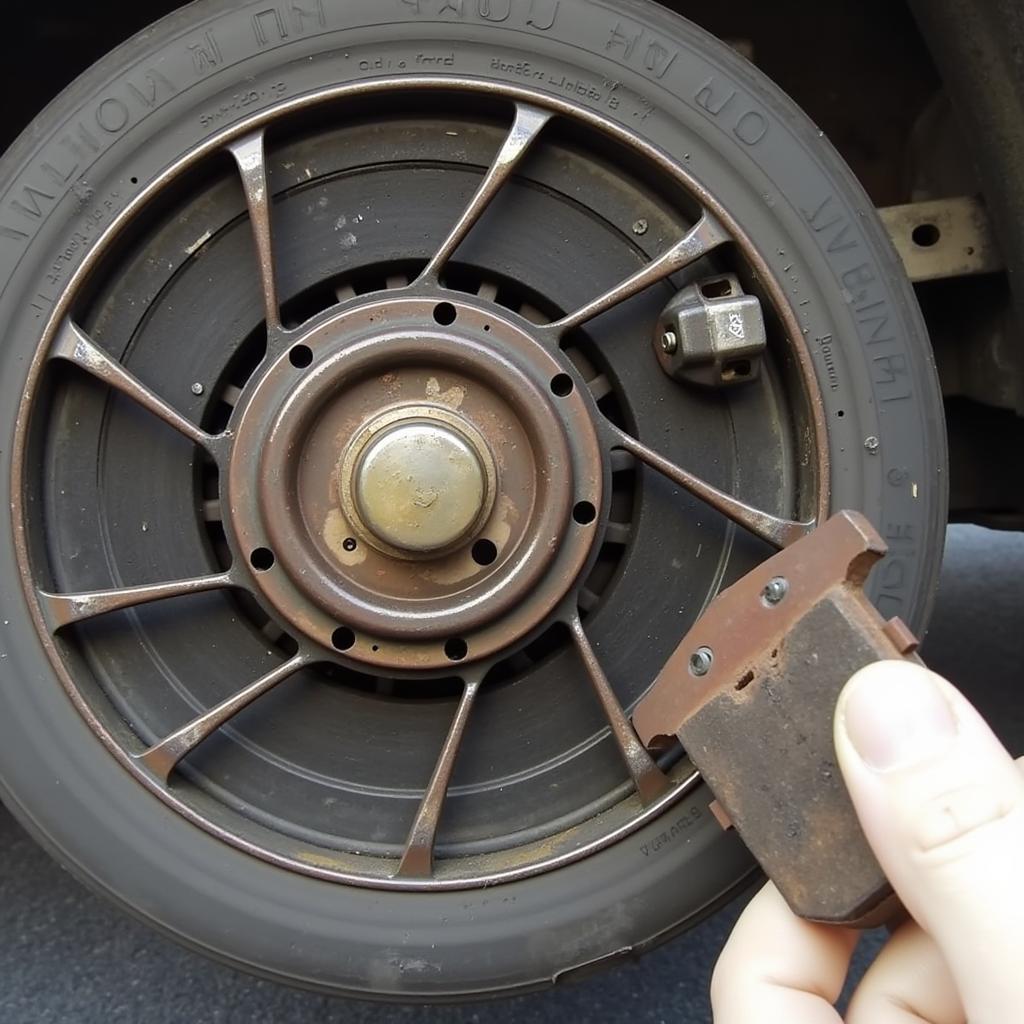If your 1995 Buick LeSabre is displaying a brake warning light and chime despite a full brake fluid reservoir, you’re not alone. This is a common issue that can stem from several causes, ranging from simple fixes to more complex problems. This article will guide you through diagnosing and potentially resolving this frustrating brake light issue.
Understanding the Brake Warning System in Your 1995 Buick LeSabre
The brake warning light and chime are crucial safety features designed to alert you to potential problems within your braking system. While a low brake fluid level is the most common trigger, other factors can activate these warnings, even with a full reservoir. Understanding how the system works is the first step in troubleshooting. Your LeSabre’s braking system includes several components, like the master cylinder, brake lines, calipers, and wheel cylinders, all working together to provide stopping power. The warning system monitors these components and alerts you when something isn’t right.
Common Causes of a Brake Warning Light with a Full Reservoir
Several issues can trigger the brake warning light even if your brake fluid reservoir is full. Let’s explore some of the most common culprits:
- Faulty Brake Light Switch: The brake light switch, located near the brake pedal, can malfunction and send a false signal to the warning system.
- Worn Brake Pads: Even with sufficient fluid, worn brake pads can trigger the warning light. This is because the pads are thinner, requiring the pistons to travel further, which can sometimes activate the sensor.
- ABS Issues: Problems within the Anti-lock Braking System (ABS), such as a failing sensor or a faulty module, can illuminate the brake warning light.
- Parking Brake Engaged: A simple oversight, like leaving the parking brake slightly engaged, can activate the warning system. Always double-check your parking brake.
- Wiring Problems: Damaged or corroded wiring within the brake system can disrupt the signal and cause the warning light to illuminate.
- Faulty Sensor: The brake fluid level sensor itself can sometimes malfunction, giving a false reading even when the reservoir is full.
Diagnosing the Problem: A Step-by-Step Guide
Here’s a step-by-step approach to help you pinpoint the cause of your brake warning light issue:
- Check the Parking Brake: Ensure the parking brake is fully disengaged. This is often the easiest fix.
- Inspect Brake Pads: Visually inspect your brake pads for wear. If they appear thin, it’s time for a replacement.
- Check Brake Fluid Level: Even if the reservoir appears full, double-check the fluid level against the “MIN” and “MAX” markings.
- Test the Brake Light Switch: A faulty brake light switch can be tested with a multimeter. If the switch isn’t working correctly, it will need to be replaced.
- Scan for ABS Codes: If you suspect an ABS issue, using an OBD-II scanner can reveal diagnostic trouble codes related to the ABS system. This requires a scanner capable of reading ABS codes.
Remote Diagnostics and Software Solutions
In some cases, remote diagnostics and software solutions can be utilized to identify and address certain brake system issues. These advanced tools allow experienced technicians to access your vehicle’s computer system remotely and pinpoint specific problems. They can even perform software updates or recalibrations that may resolve the issue without physical intervention. However, it is crucial to work with reputable and qualified professionals for remote diagnostics and programming.
“Remote diagnostics can be a game-changer for certain brake system issues, saving time and potentially reducing repair costs,” says John Smith, Automotive Electrical Engineer at Smith Automotive Solutions.
When to Seek Professional Help
While some fixes, like replacing a brake light switch, can be DIY projects, others require professional expertise. If you are uncomfortable working on your brakes or haven’t identified the issue after performing the initial checks, it’s best to consult a qualified mechanic.
Conclusion
A brake warning light and chime, even with a full reservoir, shouldn’t be ignored in your 1995 Buick LeSabre. By following the steps outlined in this guide, you can identify the problem and determine the best course of action. Remember, a properly functioning brake system is essential for your safety and the safety of others on the road. Address the issue promptly to ensure optimal braking performance.
“Never underestimate the importance of a functioning brake system. Address any warning lights immediately for optimal safety,” adds Jane Doe, Lead Technician at Doe Automotive Repair.
FAQ
- Can worn brake pads trigger the brake light even with a full reservoir? Yes, worn brake pads can cause the brake light to illuminate even if the reservoir is full.
- Is it safe to drive with the brake warning light on? No, it’s not safe to drive with the brake warning light on. Have your brakes inspected immediately.
- What does the ABS light mean? The ABS light indicates a problem with the Anti-lock Braking System.
- How often should I check my brake fluid level? It’s a good practice to check your brake fluid level monthly.
- Can I replace the brake light switch myself? Yes, replacing a brake light switch is a relatively simple DIY project for many car owners.
- Where is the brake light switch located? The brake light switch is typically located near the brake pedal, under the dashboard.
- How much does it cost to replace brake pads? The cost to replace brake pads varies depending on the vehicle and the type of pads used. Consult a mechanic for a quote.

